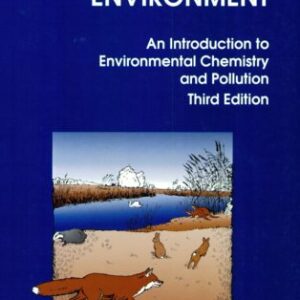“Preface Humans have a long history of using a wide variety of biomass resources as sources of energy and fuel. The discovery and use of fossil energy, represented largely by coal, natural gas, and petroleum, have drastically reduced the utilization of biomass fuels. The technologies of generating electricity using biomass, producing bioliquid fuels, and powering motor vehicles using bioalcohols and blended gasolines have been developed and practiced since the early twentieth century. Up until recently, however, development interest in biofuels had lessened due to the availability of relatively inexpensive fossil energy resources as well as the handling and transportation convenience of these conventional fuel sources. Due to the strong growth of global transportation fuel demand, sharply escalating worldwide fossil energy prices, fear over the dwindling supply of petroleum and natural gas for the near future, and credible evidence linking global warming and climate change issues with the emission of greenhouse gases, global interest and R&D efforts in renewable alternative fuels have become intense and fiercely competitive, targeting both short- and long-term solutions to alternative energy needs. Although there are a number of options and routes for energy sustainability and independence via renewable alternative energy, bioenergy and biofuels certainly possess outstanding potential to provide solutions and relief to many of the immediate, intermediate, and long-term societal needs of clean energy and their associated challenges”– Read more… Content: Introduction to Biofuels and Bioenergy Definition Global Energy Outlook Sustainability Biomass Feedstocks Processes and Technologies Environment and Ecology Crop Oils, Biodiesel, and Algae Fuels Vegetable Oils Algae Oil Extraction of Straight Vegetable Oil Manufacture of Biodiesel Ethanol from Corn Fuel Ethanol from Corn Corn Ethanol as Oxygenated Fuel Chemistry of Ethanol Fermentation Corn-to-Ethanol Process Technology By-Products/Coproducts of Corn Ethanol Ethanol as Oxygenated and Renewable Fuel Ethanol Vehicles Other Uses of Ethanol Ethanol from Lignocellulose Lignocellulose and Its Utilization Lignocellulose Conversion Historical Perspective of Alcohol Fermentation Technology Agricultural Lignocellulosic Feedstock Cellulosic Ethanol Technology Energy Balance for Ethanol Production from Biomass Process Economics and Strategic Direction Fast Pyrolysis and Gasification of Biomass Biomass and Its Utilization Analysis and Composition of Biomass Chemistry of Biomass Gasification Fast Pyrolysis of Biomass Biomass Gasification Processes Utilization of Biomass Synthesis Gas Conversion of Waste to Biofuels, Bioproducts, and Bioenergy Introduction Types of Waste and Their Distributions Strategies for Waste Management Waste Preparation and Pretreatment for Conversion Technologies for Conversion of Waste to Energy and Products Economic and Environmental Issues Related to Waste Conversion Future of the Waste Industry Mixed Feedstock Introduction Advantages and Disadvantages of Mixed Feedstock Transportation, Storage, and Pretreatment Gasification Technologies Liquefaction Technologies Summary Future of Mixed Feedstock Abstract: “Preface Humans have a long history of using a wide variety of biomass resources as sources of energy and fuel. The discovery and use of fossil energy, represented largely by coal, natural gas, and petroleum, have drastically reduced the utilization of biomass fuels. The technologies of generating electricity using biomass, producing bioliquid fuels, and powering motor vehicles using bioalcohols and blended gasolines have been developed and practiced since the early twentieth century. Up until recently, however, development interest in biofuels had lessened due to the availability of relatively inexpensive fossil energy resources as well as the handling and transportation convenience of these conventional fuel sources. Due to the strong growth of global transportation fuel demand, sharply escalating worldwide fossil energy prices, fear over the dwindling supply of petroleum and natural gas for the near future, and credible evidence linking global warming and climate change issues with the emission of greenhouse gases, global interest and R&D efforts in renewable alternative fuels have become intense and fiercely competitive, targeting both short- and long-term solutions to alternative energy needs. Although there are a number of options and routes for energy sustainability and independence via renewable alternative energy, bioenergy and biofuels certainly possess outstanding potential to provide solutions and relief to many of the immediate, intermediate, and long-term societal needs of clean energy and their associated challenges”

![[PDF] Biofuels and bioenergy : processes and technologies Sunggyu Lee; Yatish T Shah](https://pdfelite.com/wp-content/uploads/2024/04/58e6609186881b5105860bf50fc9d65e-d.jpg)




Reviews
There are no reviews yet.